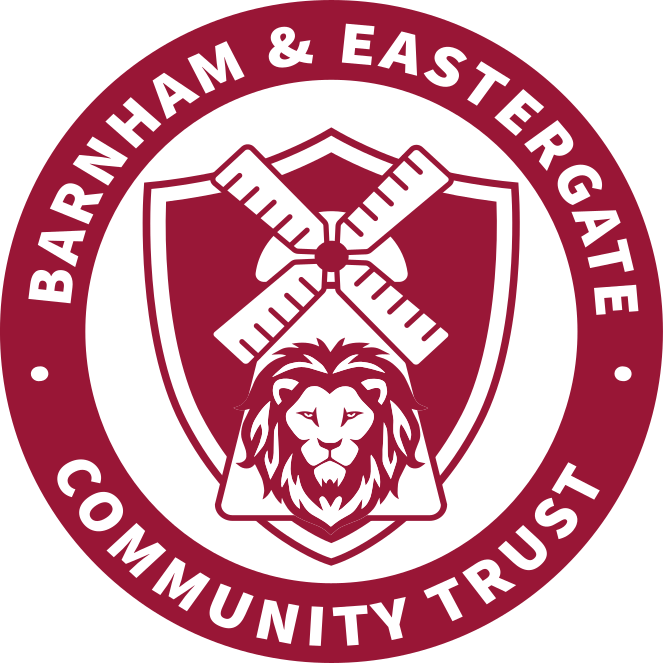
ABOUT THE HALL
Our History
Unlike most other villages, Eastergate gained its Parish Hall as a result of fears that war was imminent, rather than because of a demand for a local meeting place. In the spring of 1907, seven years before the start of the First World War, there was already a widespread feeling of unease that the country might be drawn into a new conflict.
Locally, the secretary of the County of Sussex Rifle Association wrote a letter to the Chichester Observer and West Sussex Recorder newspaper appealing for all the towns and villages in the district to set up rifle clubs where men could learn how to use a rifle, so they would be ready to serve their country if needed. Mr Alfred Day, the wealthy horse-trainer from Fontwell and Reverend William Yoward, the Rector of Eastergate, decided to call a meeting to discuss establishing a rifle club in the villages.
More than 100 people attended the meeting, including representatives from the parishes of Aldingbourne, Barnham, Boxgrove, Eartham, Eastergate, Slindon, Walberton, Yapton and Shripney. Mr Day told everyone that a plot of land in Eastergate would be chosen for the new rifle range and headquarters, because the village was the most central point in the district. Reverend Yoward announced that he and his friends would pay for the cost of constructing the building because it was not practical for all the parishes to have joint ownership of it.

When the hall opened, on 31st October 1908, it was announced that the £2,000 it had cost to build had been paid by Reverend Yoward, Mr Day and Captain Orr Ewing of Aldingbourne House, Aldingbourne.
— Eastergate Village Hall
Hall Decorations
It was possibly the elaborate plans to decorate the inside of the building with painted panels of historic local scenes that caused the delay in holding the opening ceremony. After the opening, all the panels were completed and guidebooks often refer to the hall as one of the finest in Sussex. Having reached its centenary, Eastergate’s hall is still at the centre of parish life today, although the side aisles have long ceased to be used for rifle practice.
The hall is now under the umbrella of the Barnham and Eastergate Community Trust. It is used for many different functions (but not for rifle practice!), including pantomime, fitness classes, parent and baby drop ins, choir practice, coffee mornings, artisan and craft fairs, film nights and many musical events. The hall consists of a large hall area with a bar and a separate community hub at the rear of the building. It has recently undergone many improvements, including additional kitchen equipment, new rest rooms, an audio visual sound system, new doors, new windows and floor refurbishment.
The Paintings depict:
St Wilfrid landing at Selsey (painted by Byam Shaw)
King Harold hunting wild boar (he had a palace at Bosham)
A memorial to the dead of the Great War
Elizabeth I hunting deer in Cowdray Park in 1591 (painted by Eva Day – niece of Alfred Day)
Arundel Castle at the time of the Civil War (painted by Godwin)
Sir Ralph Hopton attempting to relieve Arundel Castle (painted by Byam Shaw). It was said that the two cannon were acquired by Alfred Day and spent many years at Fontwell Park. This was the only panel to be in situ at the opening of the hall. Eight subjects had been agreed and further suggestions were requested. Lord Talbot MP suggested the flight of Charles II to France dressed as a servant.
The flight of Charles II in disguise after the Battle of Worcester through Houghton to Shoreham (painted by Barbara Chamier)
A commemoration of the ‘father of cricket’ Dick Newland in 1790 who lived in Slindon
A regiment of Dragoons outside Walberton House with General Whyte before marching to Portsmouth prior to the Battle of Waterloo (painted by Barbara Chamier)
The artist Romney sketching the novelist Mrs Charlotte Smith in the grounds of Eartham House in 1792 (posed by Mrs Day and painted by either Byam Shaw or GV Waterhouse)
John Selden, Sussex author (copied by Eva Day from a portrait by Sir Peter Lely)
The murals were paid for by Alfred Day who had a keen interest in history. Copies of receipts and correspondence can be found at West Sussex Record Office ref: MP 813. According to the author Jim Beavis, the hall proved to be a financial burden and the deeds of the hall were taken by the bank as collateral for Day’s overdraft. Day tried to sell the hall but it remained in his family’s ownership until after 1945, Alfred Day having died in 1935. (Beavis, Jim, The Days of Fontwell, 2011)
The murals were restored in 1977 by Pagham restorer Arthur Baker and Eastergate artist Dennis Frost. In a newspaper report (The WS Gazette & South of England Advertiser) in November 1977, Mr Frost explained that it “would take the two artists about two years to complete, with breaks in the summer for their own work.” It was likely to cost about £800. Bullet holes were found in some of the canvases, reminding the restorers of the original purpose of the hall. Mr Frost’s theory about the thinness of the paint on the murals was that the hall cleaning ladies had been over zealous with their use of Vim!
The aisles have long since ceased to be used for the rifle ranges and the hall is now run as a charity as the Eastergate Village Hall with no connection to the other parishes. The Boer War canon was last fired in 1911 to celebrate the coronation of Edward VII and was sent for scrap in 1940 to help the war effort.
Since 1977, Eastergate Village Hall has hosted every January the annual pantomime staged by the Eastergate Players. For further information, visit their website at www.eastergateplayers.org.uk.
Follow the link to Flickr to view more images.
Sandra LowtonFebruary 2017I


